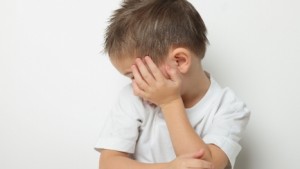How to Spot the Different Kinds of Autism
 Many people believe that autism is a type of mental retardation, but this is not the case. Rather, autism is a complex neurobehavioral disorder that affects your developmental wellness, language, communication skills and social skills. Moreover, it is a spectrum disorder, which means that there are several classifications of autism, and a range to how severely the disorder affects your wellbeing. Mild autism can allow you to lead a very normal life, whereas it is possible that severe cases necessitate institutional care.
Many people believe that autism is a type of mental retardation, but this is not the case. Rather, autism is a complex neurobehavioral disorder that affects your developmental wellness, language, communication skills and social skills. Moreover, it is a spectrum disorder, which means that there are several classifications of autism, and a range to how severely the disorder affects your wellbeing. Mild autism can allow you to lead a very normal life, whereas it is possible that severe cases necessitate institutional care.
When they hear the term “autism”, what many people commonly think of is actually a branch of the condition, known as autistic disorder. This is usually diagnosed in kids younger than three, and it means that you have certain problems with communication, social interaction and imaginative play, but the symptoms can range anywhere from mild to severe.
Another category of autism is Asperger’s syndrome, which, if you are diagnosed with means that you most likely have excellent language skills and average or above-average intelligence and do well on standardised tests. The problems that arise tend to be in your social skills, meaning you cannot interact with your peers in the usual manner. Children with Asperger’s are able to do well in school, but have trouble with classmates due to their awkward, sometimes odd, behaviours. As the condition is so mild, some people aren’t even diagnosed until they reach adolescence or even adulthood, but with specialised training, people with Asperger’s can lead typical lives and play an active role in society.
One rare form of autism is rett syndrome, which is found only in girls. This occurs when children develop normally for several years, and then their communication skills and social skills begin to regress. You can spot the signs of this condition if, between the ages of one and four, your daughter stops using their hands purposefully, and begins to make repetitive hand movements instead.
Childhood Disintegrative Disorder (CDD) is a another rare type of autism in which children develop normally for the first two years of life and then begin to lose most of their motor, language, social, toilet, and communication skills. Finally, Pervasive Developmental Disorder (PDD) or atypical autism is a miscellaneous category for people who don’t clearly fit into one of the other, more defined, categories. This means that you might have one or more traits of a few autistic categories but don’t meet the criteria for any one diagnosis.

Comments are closed.